Saudi Arabia: Saudis unveil amazing stadiums for 2034 FIFA World Cup
source: StadiumDB.com; author: Jakub Ducki
 Saudi Arabia has officially released details of the 2034 World Cup. The presentation took place in Paris, where plans to use state-of-the-art stadiums in five cities were shown. Will Saudi Arabia manage to square their bid with the international football community?
Saudi Arabia has officially released details of the 2034 World Cup. The presentation took place in Paris, where plans to use state-of-the-art stadiums in five cities were shown. Will Saudi Arabia manage to square their bid with the international football community?
Advertisement
Paris presentation
FIFA unveiled details of Saudi Arabia's bid to host the 2034 World Cup on Wednesday, July 31, 2024 in Paris. Growing Together,
the official slogan of the bid received the full support of Saudi Crown Prince Mohammed bin Salman.
We are working together to materialise Saudi Arabia's dream of hosting the FIFA World Cup into a tangible reality - according to our official bid book,
said Prince Abdulaziz bin Turki Al-Faisal, Minister of Sport and President of the Saudi Olympic and Paralympic Committee.
These plans will combine our rich football heritage with our deep passion for the game and ensure Saudi Arabia's success as the first nation to host a 48-team tournament in one country
- he added. Yasser Al-Misehal, president of the Saudi Football Federation, said it was a natural step in the development of Saudi football and the sports sector.
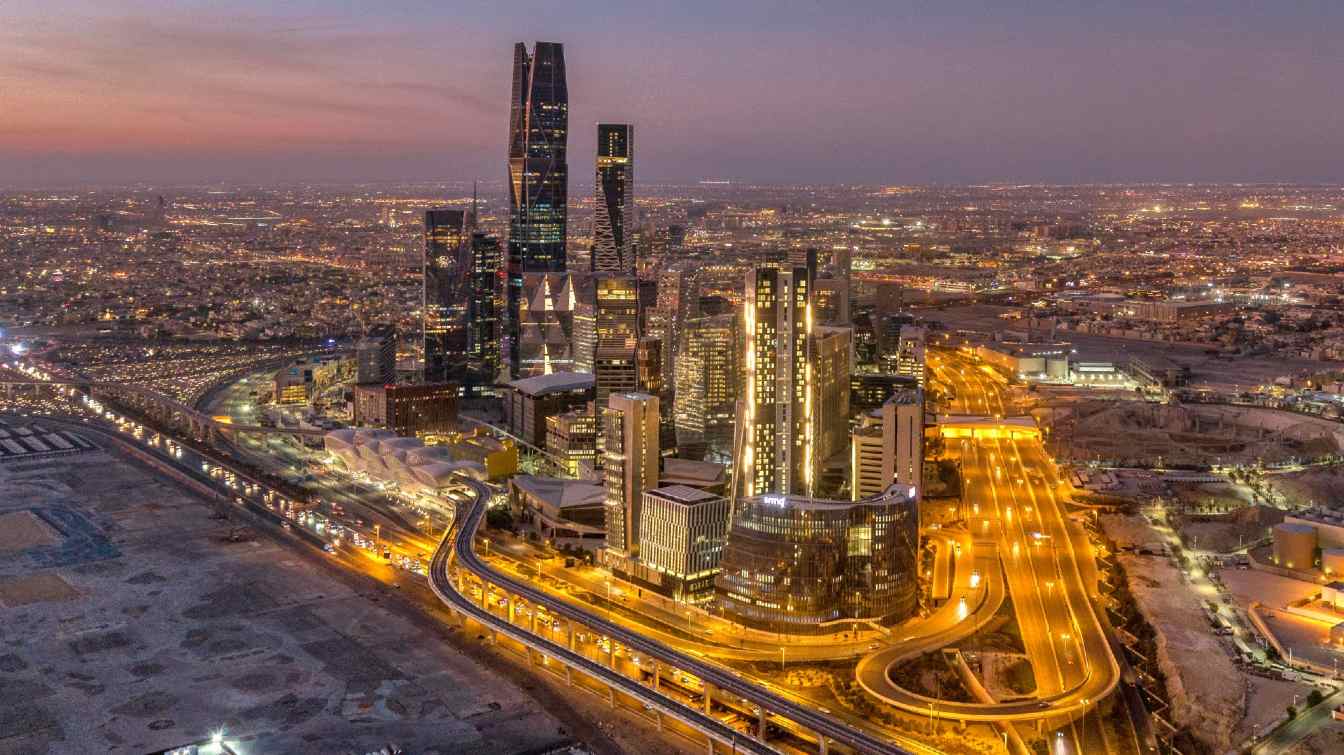 © saudi2034bid.com |Riyadh, the main city of the championship
© saudi2034bid.com |Riyadh, the main city of the championship
Stadiums beyond this earth
Saudi Arabia, known for its natural resources, is placing importance on infrastructural and technological development. Hosting the World Cup is an opportunity for it to show a new face - an open, dynamic and innovative country. The plan includes five cities: Riyadh, Jeddah, Al Khobar, Abha and the futuristic NEOM project.
A key element of the bid is the stadiums - as many as 15 of which are to be used during the tournament. The vast majority of these venues are to be redesigned or extensively upgraded to meet the highest global standards. Riyadh, the country's capital, is where the biggest events are planned, including the opening matches and the final. In Jeddah, known for its beautiful beaches and modern buildings, a stadium with unique architecture will be built to be a symbol of the new Arabia.
Saudi Arabia has unveiled its bid to host the 2034 FIFA World Cup, with as many as 15 stadiums included. Here is a brief description of each of them:
King Salman International Stadium, Riyadh (new stadium) - This spectacular new stadium will have the largest capacity in Saudi Arabia and will become the main sporting venue and home of the national team. The stadium will host the opening and final matches and its surroundings will become a highlight of the Green Riyadh masterplan, contributing to the ongoing transformation of the city.
- Capacity: 92,760 spectators.
- World Cup phases: Opening match, group phase, Round of 32 and 16 matches, quarter-final, semi-final and final
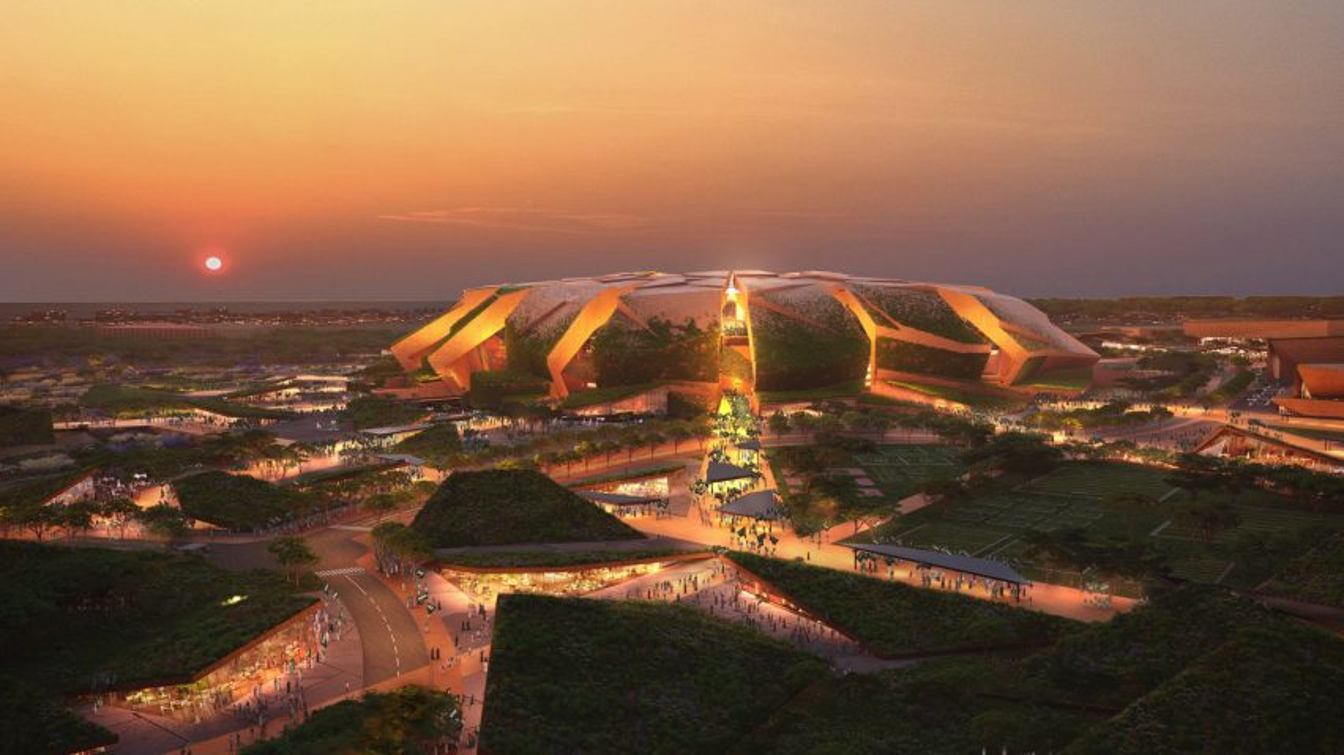 King Salman International Stadium
King Salman International StadiumKing Fahd International Stadium, Riyadh - This existing stadium is one of the most iconic venues in the region, with a distinctive fabric roof inspired by traditional tents. It is close to attractions such as the planned Sports Boulevard, which will provide community access to green spaces. The refurbishment will significantly increase capacity and enable the venue to be used for everything from football matches to concerts.
- Capacity: 70,200 spectators.
- World Cup phases: Group phase, Round of 32 and 16 matches, quarter-final and semi-final.
King Abdullah Sports City Stadium, Jeddah - This stadium was built in 2014 and is known as the 'Shining Jewel' due to its distinctive geometric architecture. Planned renovations aim to bring the stadium up to FIFA requirements and integrate it with the existing architecture.
- Capacity: 58,432 spectators.
- World Cup phases: Group stage, Round of 32, 16 matches and quarter-finals.
Prince Mohammed bin Salman Stadium, Qiddiya (new stadium) - This new stadium will be located in the Qiddiya complex and its design offers spectacular views of the Tuwaiq cliffs. The stadium's materials, including iridescent glass and shiny metal, contribute to a futuristic aesthetic.
- Capacity: 46,979 spectators.
- World Cup phases: Group phase, Round of 32, 16 matches and 3rd place match
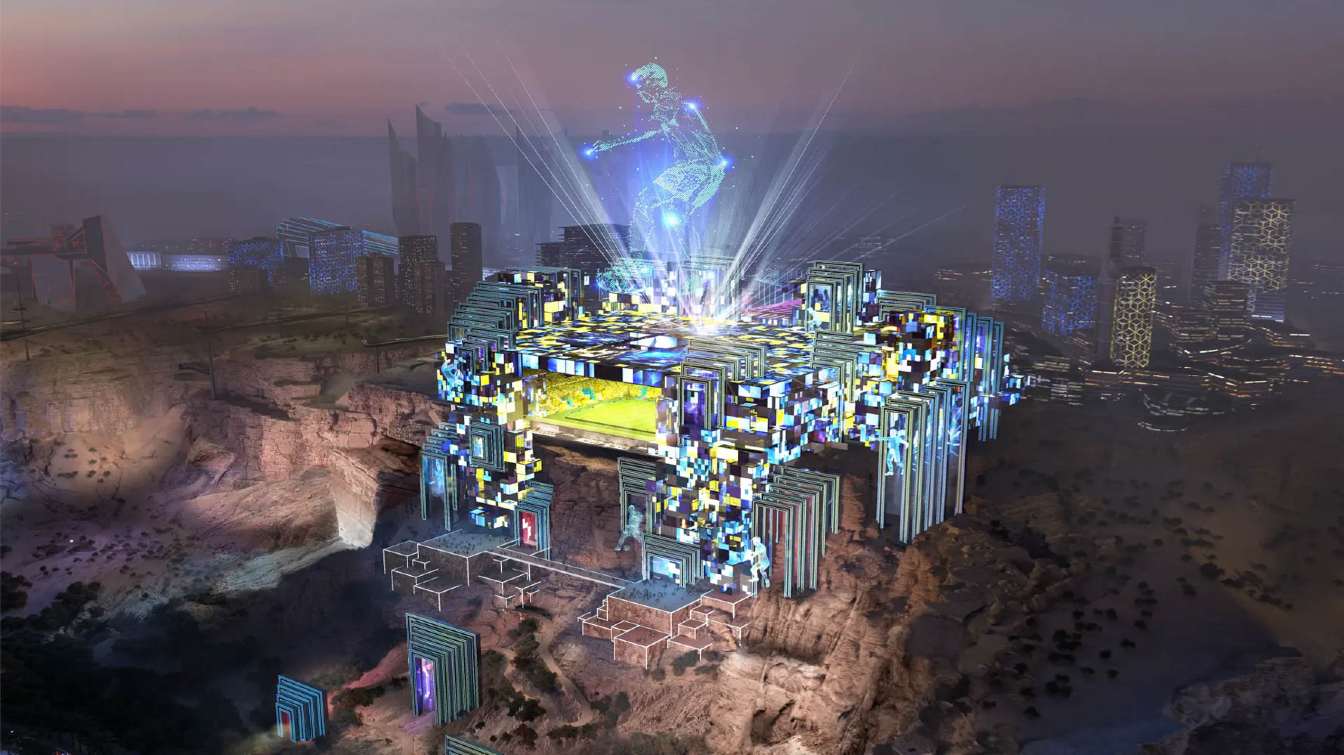 Prince Mohammed bin Salman Stadium
Prince Mohammed bin Salman StadiumPrince Faisal bin Fahd Sports City, Riyadh - This will be a new multi-purpose sports facility in Riyadh. Its design draws inspiration from the culturally contextualised modernism
principles of Salmani architecture. The stadium will be part of a wider plan for the park area. It will be at the heart of a vibrant facility that will provide residents with a mix of sports facilities and green spaces.
- Capacity: 46,865 seats.
- World Cup phases: Group phase and Round of 32 match
King Saud University Stadium, Riyadh - This existing stadium is located next to the vibrant U Walk - King Saud University's mixed-use development. It currently hosts Saudi Pro League matches and other major sporting events, and will be expanded in capacity for the competition.
- Capacity: 46,319 seats.
- World Cup phases: Group phase and Round of 32 match
Murabba Stadium, Riyadh (new stadium) - The distinctive design of this new stadium mimics the overlapping planes and bark texture of the native acacia tree.
- Capacity: 46,010 seats.
- World Cup phases: Group phase and Round of 32 match
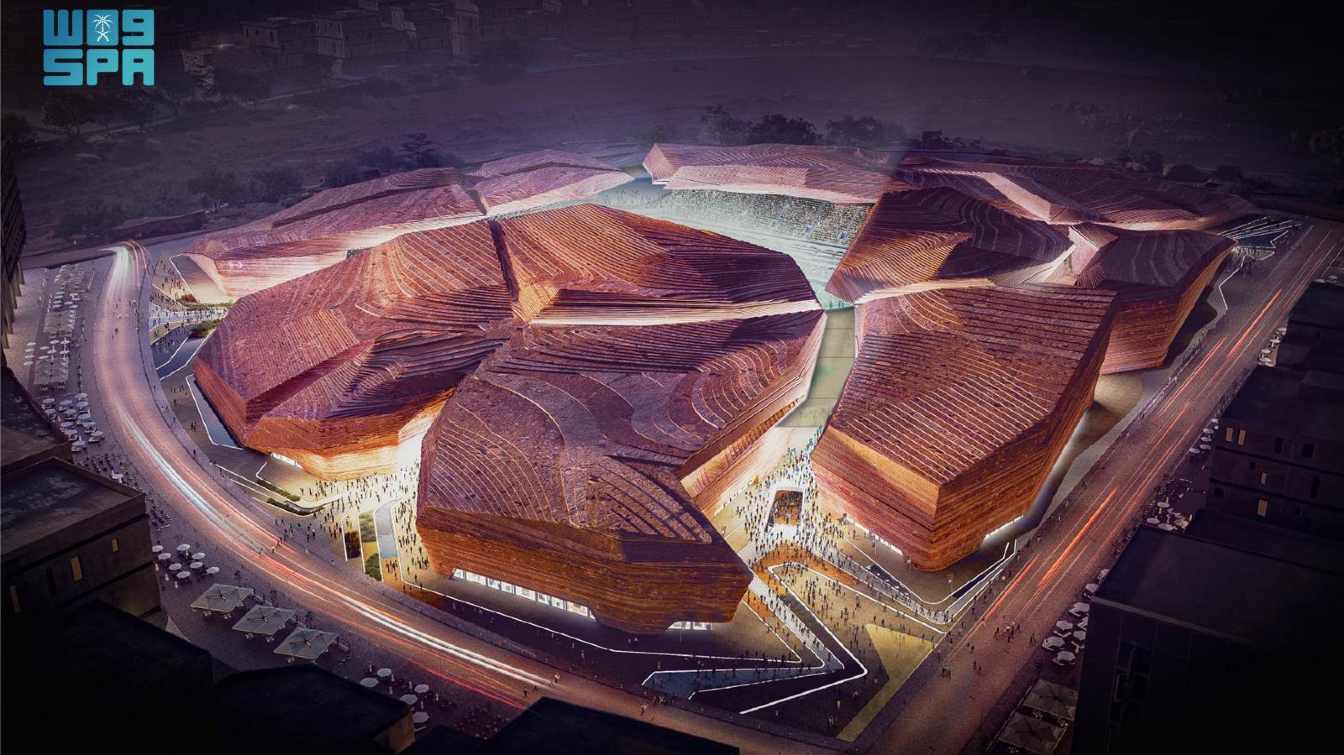 Murabba Stadium
Murabba StadiumNeom Stadium, Neom (new stadium) - This new stadium will be the most unique in the world. With a pitch more than 350 metres above the ground and a roof created from the city itself, the stadium will be an experience like no other. Once completed, it will be the home of a professional football club and the focal point of the city's sports and active lifestyle programme.
- Capacity: 46,010 seats.
- World Cup phases: Group phase, Round of 32, 16 matches and quarter-finals.
Aramco Stadium, Khobar (new stadium) - This new stadium is located in the northern part of Al Khobar, on the shores of the Arabian Gulf. Its architecture celebrates the dynamic nature of the sea. After the tournament, the stadium will be home to a professional football club.
- Capacity: 46,096 seats.
- World Cup phases: Group phase, Round of 32 and 16 matches
Qiddiya Coast Stadium, Qiddiya (new stadium) - This new stadium will be located in the heart of the Qiddiya Coast Development, on the banks of the Red Sea, with other sports infrastructure and hotels nearby. Its design evokes a Mexican wave
effect with a rich and joyful colour palette.
- Capacity 46,096.
- World Cup phases: Group stage, Round of 32 and 16 matches
Roshn Stadium, Riyadh (new stadium) - The new stadium has been designed as a dynamic part of the urban fabric, with a different look to typical sports facilities. It will be located in a central square surrounded by a crystalline
bowl structure, a delicate mesh that will glow in the night sky.
- Capacity 46,000.
- World Cup phases: Group phase and Round of 32 match
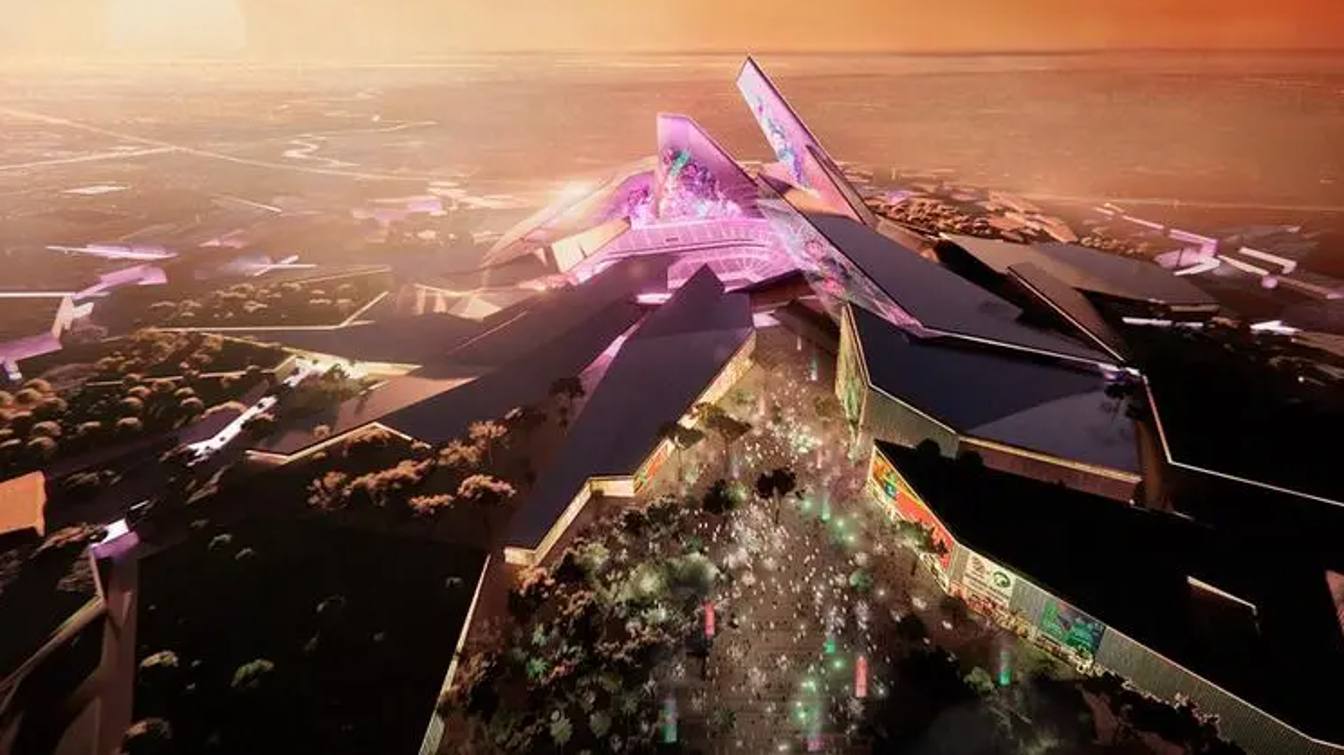 Roshn Stadium
Roshn StadiumKing Khalid University Stadium, Abha - This existing stadium is located in the south-east of Abha. Capacity will be increased to more than 45,000 for the 2034 FIFA World Cup and the renovation will focus on upgrading the infrastructure while respecting the stadium's historical context.
- Capacity: 45,428 seats.
- World Cup phases: Group stage, Round of 32 and 16 matches.
Jeddah Development Stadium, Jeddah (new stadium) - This stadium draws on the traditional architecture of the historic Al Balad district of Jeddah, while incorporating technological advances and innovative building design. It will be the anchor of the JCD sports district, seamlessly integrated with the surrounding villages.
- Capacity: 45,794 seats
- World Cup phases: Group phase and Round of 32 match
King Abdullah Economic City Stadium, Jeddah (new stadium) - This new stadium will serve the vibrant King Abdullah Economic City area on the Red Sea coast. Its versatile design and organic aesthetics are inspired by how local coral reefs grow.
- Capacity: 45,700 seats
- World Cup phases: Group stage and Round of 32 match
South Riyadh Stadium, Riyadh (new stadium) - The stunning design of this new stadium is inspired by the culturally contextualised modernism
principles of Salmani architecture. Once the competition is complete, the stadium will be home to a professional football club and host sporting and entertainment events.
- Capacity of 40,060 seats.
- World Cup phases: Group phase and Round of 32 match
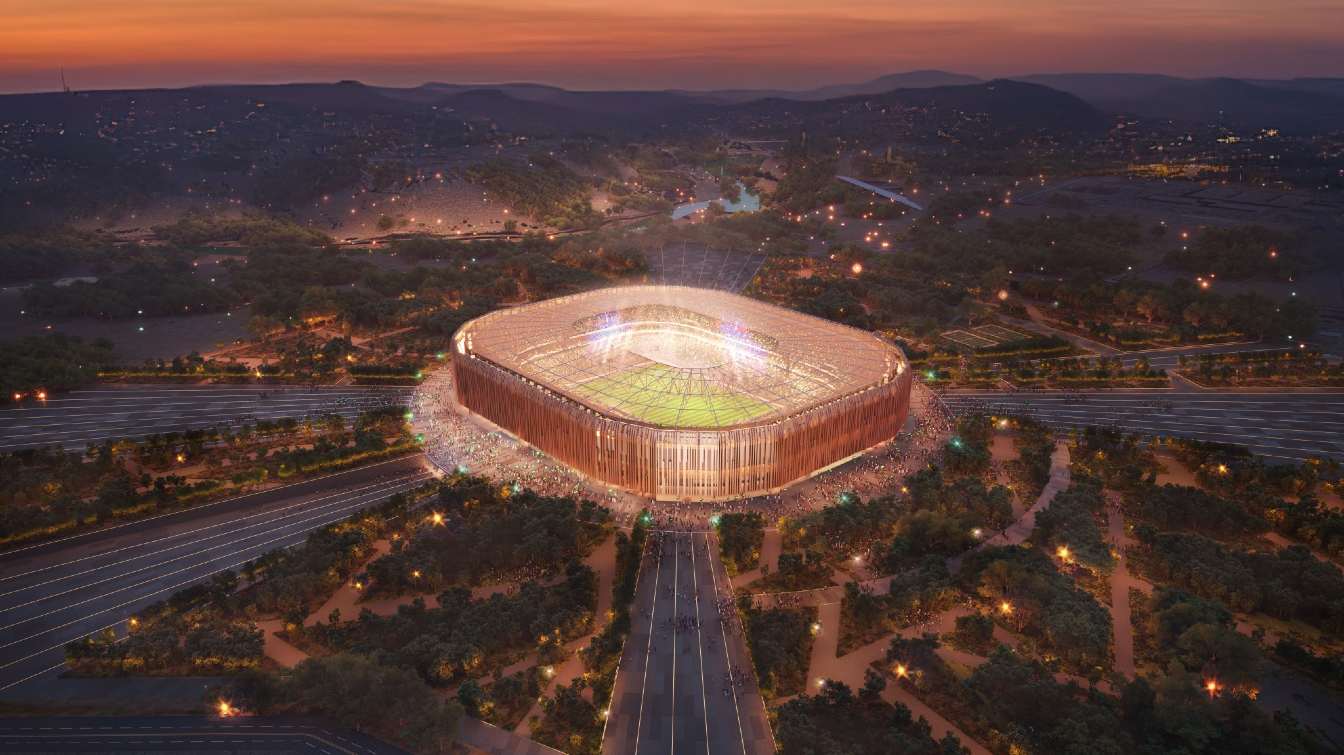 South Riyadh Stadium
South Riyadh StadiumAdditional infrastructure
A total of 132 training venues located in 15 cities are planned for the championship. In addition, base camps are planned for 48 teams, including 72 locations designated as Base Camp Training Sites. Referees are to have access to two training camps. The official bid book shows 10 proposed FIFA Fan Festival locations in Arabia. FIFA will select one location in each host city from the list. King Salman Park in Riyadh, will become the largest city park in the world.
Advertisement
 StadiumDB
StadiumDB